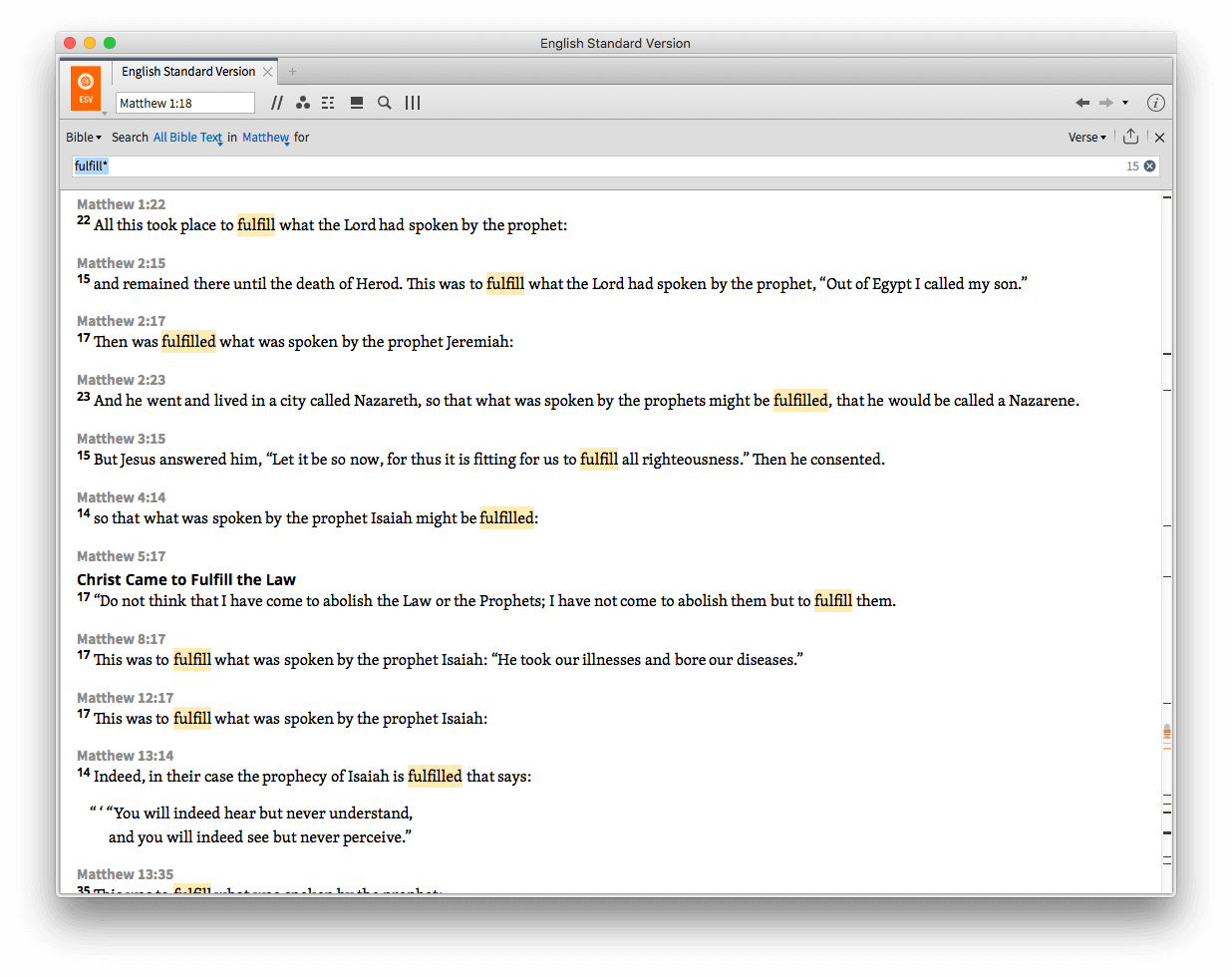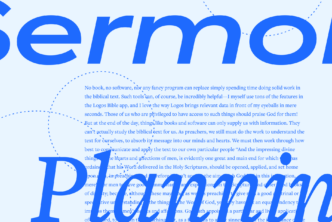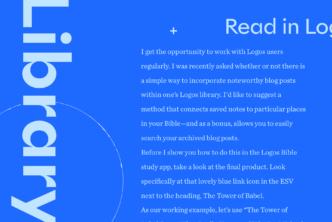The New Testament’s use of the Old Testament has been described as the “master problem” of Christian theology. Jesus’ and Paul’s words on the subject are direct and, in a way, simple: Jesus didn’t come to destroy the law but to “fulfill” it (Matt 5:16–17); and Paul says we are “not under law, but under grace” (Rom 6:14). But how do you harmonize those and other NT statements about the law, and how do you work out their specific implications? That’s the master problem.
In the Mobile Ed course Matthew’s Use of the Old Testament: Kingdom and Christology, Jeannine K. Brown explores the relationship of the testaments within Matthew. The “intertextuality” of the book of Matthew is the leading feature of the course, and her read of the scriptural evidence provides a way to bridge some apparent gaps between the Old Testament and the New.
In her own book on hermeneutics, Brown defines intertextuality this way (quoting Kristen Nielsen along the way):
Intertextuality is the notion that texts are mutually interdependent. ‘Each and every text forms part of a network of texts from which it derives its meaning.’ Intertextuality can thus include a canonical reading of the Bible. It can also refer to the ways that individual biblical books assume and refer to other earlier biblical and nonbiblical texts.
Bible books “refer” to each other in complex ways. Intertextuality, then, includes not just quotation but thematic and verbal allusions; Brown mines all of these for her course. She argues for a very rich set of connections between Matthew and the Old Testament, a set that goes beyond the famous “fulfillment formulas.” (“This was to fulfill what the Lord had spoken by the prophet…”)
Brown sees Jesus’ 40-day temptation in the wilderness in Matthew 4, for example, as a recapitulation of Israel’s 40-year sojourn there. “Where Israel failed in their wilderness temptation, Jesus succeeds,” she says.
But it’s those fulfillment formulas which occasion the most hermeneutical debate, because they are the places where Matthew is not being subtle: he is explicitly telling his readers that Jesus is, in one way or another, bringing to life the words of the Old Testament.
In order to get the full value out of the gifted teaching of someone like Brown, you’ll want to take a look at the scriptural evidence yourself.
Exploring fulfillment formulas in Matthew
And that’s going to take a while. Let me show you how I launched my own study of the explicit fulfillment formulas in Matthew. I Just did an inline search in the ESV for “fulfill*” within the book of Matthew. (The asterisk makes sure you’ll find not just fulfill but fulfills, fulfilling, and fulfillment.) This is what I saw:
But it’s little help to see one verse at a time in this case, because you don’t get to see Matthew’s actual quotations of the Old Testament.
You could choose, via the dropdown in the upper right hand corner of the window, to see paragraphs instead. That’s better:
But what you really want is to view each pericope, the third option in the dropdown:
This way, for each fulfillment formula, you can see the most relevant cotext. (No, that’s not a typo; cotext is surrounding text, while context is a broader term which can refer to historical situation as well as text.)
Now start reading. Within Matthew itself, what are these OT citations accomplishing? After you have a handle on that question, start looking up the OT citations within their own “cotexts.” (If you have Logos Now, you can use the New Testament Use of the Old Testament interactive; if not, any cross-referencing system in your library will point you in the right direction.) Given what you’ve just read, what does “fulfill” mean for Matthew?
I’ll alert you to one major thing I think you’ll find: there is more than one way Matthew believed events in Jesus’ life could “fulfill” the Old Testament.
Some fulfillments are strong and explicit, such as the very first one mentioned in the book: “Behold, the virgin shall conceive and bear a son, and they shall call his name Immanuel,” (Matt 1:23 quoting Isa 7:14).
But some fulfillments are not quite so straightforward. In fact, you may struggle to explain how Matthew honors the apparent authorial intent of the Old Testament author he is quoting in any given instance. D.A. Carson, for instance, author one of the top recommended commentaries on Matthew, says he spent days researching Matthew 2:15’s quotation of Hosea: “Out of Egypt I called my son.”
Brown suggests an overarching historical and theological context in which Israel’s exile and restoration inform Matthew’s use of the Old Testament. In her Mobile Ed course, she says regarding the Hosea quotation:
What is Matthew doing with this? [Is] Matthew . . . simply pluck[ing] a text out of its OT context and use[ing] it for his own purposes?
I think something is being done by Matthew that’s much more carefully thought out than that. Here we see that Matthew wants us to hear Jesus, and his journey into Egypt and then back to the land, because we’ll hear in the end of chapter two that Joseph, Mary, and Jesus returned to the land of Israel, and it’s emphasized again, they come back to the land of Israel. [This is a] very important return motif within the chapter itself.
We can hear this exile-Egypt-return-land-of-Israel theme within Matthew’s narrative. He gets that from Hosea. He draws on this exile restoration motif from Hosea and wants us to hear that like Israel came out of Egypt and back into the land, so Jesus comes out of Egypt and into the land.
The son . . . is Israel in the OT context—and by the way, Israel is called Yahweh’s son here in this text and other points. . . .
Matthew wants to capitalize that analogously and say, ‘Now, this son, the eminent son, the quintessential son who is Jesus is called out of Egypt into Israel,’ and by doing this, he gets a sort of Israel Christology. In other words, a way of understanding Jesus as a type of Israel or representative Israel.
Brown does not solve the master problem of New Testament theology (nor claim to), but she does take the necessary first step for any biblical theologian. She reads the Bible carefully, building up an inductive view of Matthean intertextuality through a close look at the scriptural evidence.
You may disagree with her read of any given intertextual connection, but if you want your alternate view to be persuasive to others you’ve got to repeat her work. You’ve got to perform a detailed examination of the texts in question.
For a limited time, you can pre-order Jeanine Brown’s Mobile Ed course on Matthew’s Use of the Old Testament and save $60. This course isn’t just a helpful introduction to Matthew’s use of the OT, it’s an excellent case study for intertextual study and interpretation in general. This course is normally $150, but you can pre-order it for just $89.99. Pre-order now!








